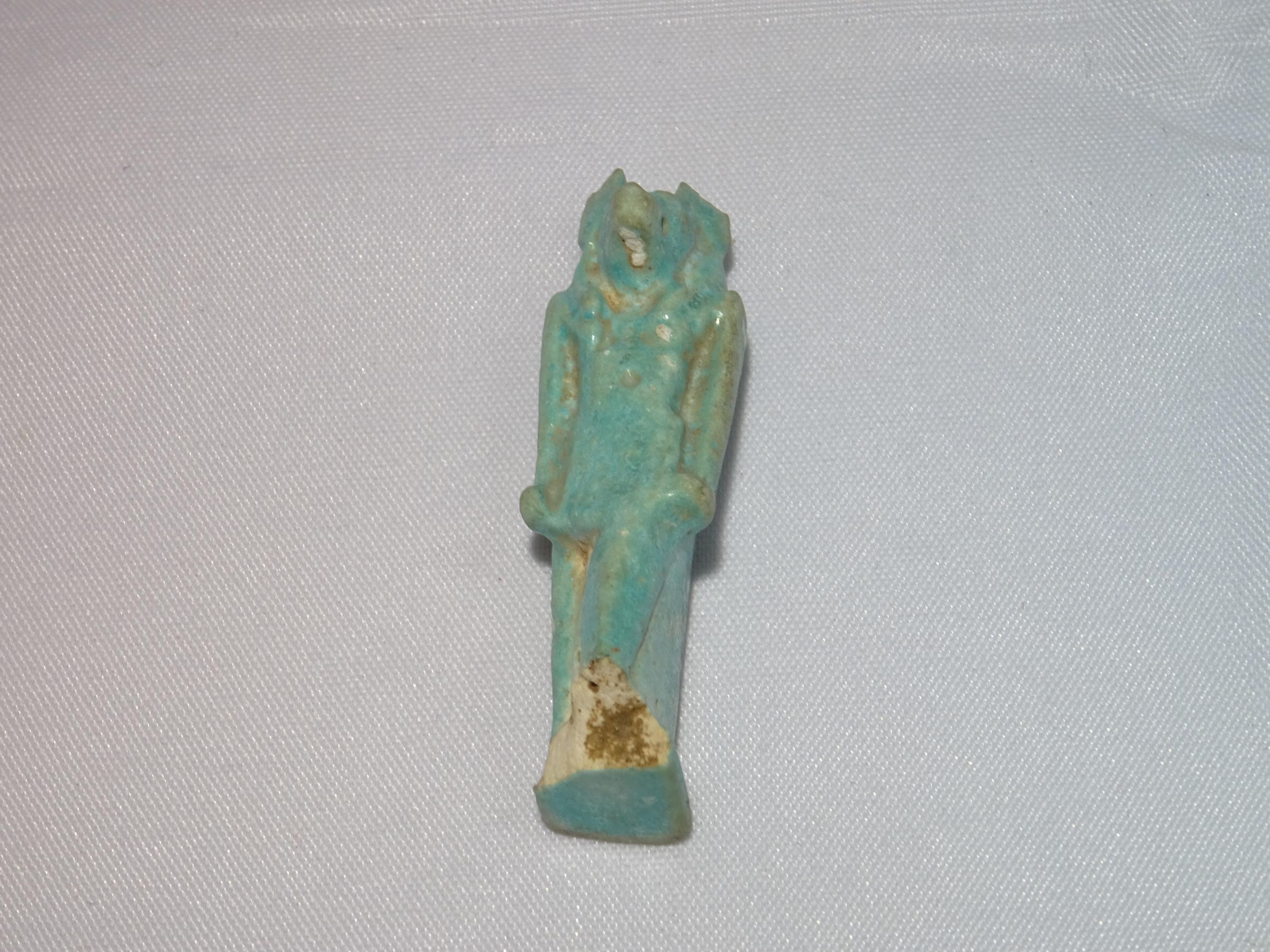Egyptian Faience Amulets- Anubis
Name/Title
Egyptian Faience Amulets- AnubisEntry/Object ID
03EG0883lviDescription
Faience amulet of a striding, kilted Anubis. Missing one foot and tips of ears.Use
ProtectionContext
The Egyptians believed that misfortune and disease originated from malign spirits and the hostile dead. Maintaining health and prosperity was therefore achieved by providing protection against these forces. Amulets representing particular forces were worn around the neck for good luck and protection. They were also buried with the dead to ensure safe passage to the afterlife. Among the earliest attested deities of the dynastic period is Anubis (Inpw), who occupied the role as a chief funerary god in the Old Kingdom until the Middle Kingdom, during which he, along with his cult, was assimilated into that of Osiris. In his role as a funerary deity he served as a guide, protector, and judge of the dead. He was also the patron of embalmers, a position doubtlessly linked to his participation in the embalming of the body of Osiris in myth. Funerary prayers of the Old Kingdom explicitly address Anubis, and in the Pyramid Texts he is the judge of the deceased and is associated with the burial of the king. Anubis assumes the form of either a black jackal or, after the New Kingdom, a jackal-headed male - he is rarely depicted in fully-human form. The black colour, derived from the fertile black earth of the floodplain, is symbolic of fertility and the afterlife. It is likely that Anubis' amuletic form, worn only by the deceased, would have served as a means of acquiring his guidance and protection.Made/Created
Time Period
UnknownEthnography
Culture/Tribe
Egyptian

